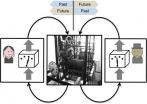(Press-News.org) In the tribal societies of the Amazon forest, violent conflict accounted for 30 percent of all deaths before contact with Europeans, according to a recent study by University of Missouri anthropologist Robert Walker. Understanding the reasons behind those altercations in the Amazon sheds light on the instinctual motivations that continue to drive human groups to violence, as well as the ways culture influences the intensity and frequency of violence.
"The same reasons - revenge, honor, territory and jealousy over women - that fueled deadly conflicts in the Amazon continue to drive violence in today's world," said Walker, lead author and assistant professor of anthropology in MU's College of Arts and Science. "Humans' evolutionary history of violent conflict among rival groups goes back to our primate ancestors. It takes a great deal of social training and institutional control to resist our instincts and solve disputes with words instead of weapons. Fortunately, people have developed ways to channel those instincts away from actual deadly conflict. For example, sports and video games often involve the same impulses to defeat a rival group."
Walker examined records of 1,145 violent deaths in 44 societies in the Amazon River basin of South America by reviewing 11 previous anthropological studies. He analyzed the deaths on a case-by-case basis to determine what cultural factors influenced the body counts. Internal raids among tribes with similar languages and cultures were found to be more frequent, but with fewer fatalities, when compared to the less frequent, but deadlier, external raids on tribes of different language groups.
"Language and other cultural differences play a role in the 'clash of civilizations' that resulted in recent violence, such as the deadly attack on the U.S. embassy in Libya and the continuing war in Afghanistan," said Walker. "Working to develop a shared sense of humanity for all the Earth's people could help reduce major episodes of violence by encouraging people to view each other as one unified group working towards common global goals."
Raids also sometimes involved kidnapping women. A similar number of women were kidnapped on average in both internal and external raids. Another aspect of Amazonian warfare was treachery, such as inviting a rival group to a feast and then slaughtering them after they got drunk. These attacks resulted in high levels of mortality.
"Revenge was necessary in historical intertribal warfare, just as in modern gang conflicts, because showing weakness would result in further attacks," Walker said. "That cycle of revenge could result in tribes eradicating each other. After European contact, the dynamics of Amazonian tribal life changed dramatically. Although the spread of Christianity and imposition of national legal structures resulted in a great loss of cultural identity, it also reduced deadly raids. Today, such violence is rare. Disease and conflict with illegal loggers and miners have become the more common causes of death."
###
The study "Body counts in lowland South American violence," was published in the journal Evolution & Human Behavior. Drew Bailey, a recent doctoral graduate in psychological science from MU, was co-author.
Amazonian tribal warfare sheds light on modern violence, says MU anthropologist
Developing a shared sense of global community could help reduce major episodes of violence
2012-10-02
ELSE PRESS RELEASES FROM THIS DATE:
Manatees reflect quality of health in marine ecosystems, longterm study finds
2012-10-02
FAIRFAX, Va., October 1, 2012—A longterm study conducted by researchers at George Mason University may be a benchmark in determining health threats to marine mammals.
Over ten years of research in Belize was conducted studying the behavioral ecology, life history and health of manatees in an area relatively undisturbed by humankind.
"Manatees are the proverbial 'canaries in the mineshaft,' as they serve as indicators of their environment and may reflect the overall health of marine ecosystems," says Alonso Aguirre, executive director of the Smithsonian-Mason School ...
Adult stem cells change their epigenome to generate new organs
2012-10-02
The team led by Manel Esteller, director of the Cancer Epigenetics and Biology Program in the Bellvitge Biomedical Research Institute (IDIBELL), Professor of Genetics at the University of Barcelona and ICREA researcher, has identified epigenetic changes that occur in adult stem cells to generate different body tissues. The finding is published this week in The American Journal of Pathology.
The genome of every single cell in the human body is the same, regardless of their appearance and function. Therefore the activity of the tissues and organs and its disorders in complex ...
Hopkins study suggests treatments for 'wet' AMD keep elderly drivers behind the wheel
2012-10-02
The advanced neovascular, or "wet," form of age-related macular degeneration (AMD), left untreated, is the most common cause of vision loss among the elderly and a leading reason for their loss of driving privileges. But results of a new study, published in the online version of the journal Ophthalmology, suggest that monthly injections of ranibizumab improve eye chart test results required for a driver's license, build driver confidence and keep those with AMD driving longer.
The wet form of AMD is marked by the abnormal scarring and leaking of new blood vessels in ...
New findings on the workings of the inner ear
2012-10-02
The sensory cells of the inner ear have tiny hairs called stereocilia that play a critical part in hearing. It has long been known that these stereocilia move sideways back and forth in a wave-like motion when stimulated by a sound wave. After having designed a microscope to observe these movements, a research team at Karolinska Institutet in Sweden has discovered that the hairs not only move sideways but also change in length.
The discovery, which was made in collaboration with scientists at Baylor College of Medicine in Texas, USA provides new fundamental knowledge ...
New research measures the cost of getting cleaner air
2012-10-02
Extensive environmental regulations have brought cleaner air and health improvements to the United States, but they also have increased the cost of manufacturing and reduced industrial productivity, according to a study by economists at the University of Chicago and MIT.
Some economists have suggested that the regulations encouraged companies to become more efficient, thus reducing costs at upgraded plants. But in a paper published by the National Bureau of Economic Research, three economists contend that the regulations led to a 4.8 percent decline in productivity and ...
Study: An apple a day lowers level of blood chemical linked to hardening of the arteries
2012-10-02
COLUMBUS, Ohio – Eating an apple a day might in fact help keep the cardiologist away, new research suggests.
In a study of healthy, middle-aged adults, consumption of one apple a day for four weeks lowered by 40 percent blood levels of a substance linked to hardening of the arteries.
Taking capsules containing polyphenols, a type of antioxidant found in apples, had a similar, but not as large, effect.
The study, funded by an apple industry group, found that the apples lowered blood levels of oxidized LDL -- low-density lipoprotein, the "bad" cholesterol. When LDL ...
Among voters lacking strong party preferences, Obama faces 20% handicap due to race bias
2012-10-02
An online study of eligible voters around the country revealed that the preference for whites over blacks is the strongest in the least politically-partisan voters. Among these voters, race biases against Barack Obama could produce as much as a 20 percent gap in the popular vote in a contest that would otherwise be equal.
"Although they may not determine the election outcome, race biases are having a strong anti-Obama effect among the least politically partisan voters," said Anthony Greenwald, a University of Washington psychology professor who conducted the survey. "If ...
New research model to aid search for degenerative disease cures
2012-10-02
Irvine, Calif., Oct. 2, 2012 — Efforts to treat disorders like Lou Gehrig's disease, Paget's disease, inclusion body myopathy and dementia will receive a considerable boost from a new research model created by UC Irvine scientists.
The team, led by pediatrician Dr. Virginia Kimonis, has developed a genetically modified mouse that exhibits many of the clinical features of human diseases largely triggered by mutations in the valosin-containing protein.
The mouse model will let researchers study how these now-incurable, degenerative disorders progress in vivo and will ...
Quantum causal relations: A causes B causes A
2012-10-02
This press release is available in German.
One of the most deeply rooted concepts in science and in our everyday life is causality; the idea that events in the present are caused by events in the past and, in turn, act as causes for what happens in the future. If an event A is a cause of an effect B, then B cannot be a cause of A. Now theoretical physicists from the University of Vienna and the Université Libre de Bruxelles have shown that in quantum mechanics it is possible to conceive situations in which a single event can be both, a cause and an effect of another one. ...
Ames Laboratory finds ordered atoms in glass materials
2012-10-02
Scientists at the U.S. Department of Energy's Ames Laboratory have discovered the underlying order in metallic glasses, which may hold the key to the ability to create new high-tech alloys with specific properties.
Glass materials may have a far less randomly arranged structure than formerly thought.
Over the years, the ideas of how metallic glasses form have been evolving, from just a random packing, to very small ordered clusters, to realizing that longer range chemical and topological order exists.
But by studying the structure of a metallic glass alloy formed ...
LAST 30 PRESS RELEASES:
Young adults commonly mix cannabis with nicotine and tobacco
Comprehensive review illuminates tau protein's dual nature in brain health, disease, and emerging psychiatric connections
Book prepares K-12 leaders for the next public health crisis
Storms in the Southern Ocean mitigates global warming
Seals on the move: Research reveals key data for offshore development and international ecology
Sports injuries sustained during your period might be more severe
World's first successful 2 Tbit/s free-space optical communication using small optical terminals mountable on satellites and HAPS
Can intimate relationships affect your heart? New study says ‘yes’
Scalable and healable gradient textiles for multi‑scenario radiative cooling via bicomponent blow spinning
Research shows informed traders never let a good climate crisis go to waste
Intelligent XGBoost framework enhances asphalt pavement skid resistance assessment
Dual-function biomaterials for postoperative osteosarcoma: Tumor suppression and bone regeneration
New framework reveals where transport emissions concentrate in Singapore
NTP-enhanced lattice oxygen activation in Ce-Co catalysts for low-temperature soot combustion
Synergistic interface engineering in Cu-Zn-Ce catalysts for efficient CO2 hydrogenation to methanol
COVID-19 leaves a lasting mark on the human brain
Scientists use ultrasound to soften and treat cancer tumors without damaging healthy tissue
Community swimming program for Black youth boosts skills, sense of belonging, study finds
Specific depressive symptoms in midlife linked to increased dementia risk
An ‘illuminating’ design sheds light on cholesterol
Who is more likely to get long COVID?
Study showcases resilience and rapid growth of “living rocks”
Naval Research Lab diver earns Office of Naval Research 2025 Sailor of the Year
New Mayo-led study establishes practical definition for rapidly progressive dementia
Fossil fuel industry’s “climate false solutions” reinforce its power and aggravate environmental injustice
Researchers reveal bias in a widely used measure of algorithm performance
Alcohol causes cancer. A study from IOCB Prague confirms damage to DNA and shows how cells defend against it
Hidden viruses in wastewater treatment may shape public health risks, study finds
Unlock the power of nature: how biomass can transform climate mitigation
Biochar reshapes hidden soil microbes that capture carbon dioxide in farmland
[Press-News.org] Amazonian tribal warfare sheds light on modern violence, says MU anthropologistDeveloping a shared sense of global community could help reduce major episodes of violence

